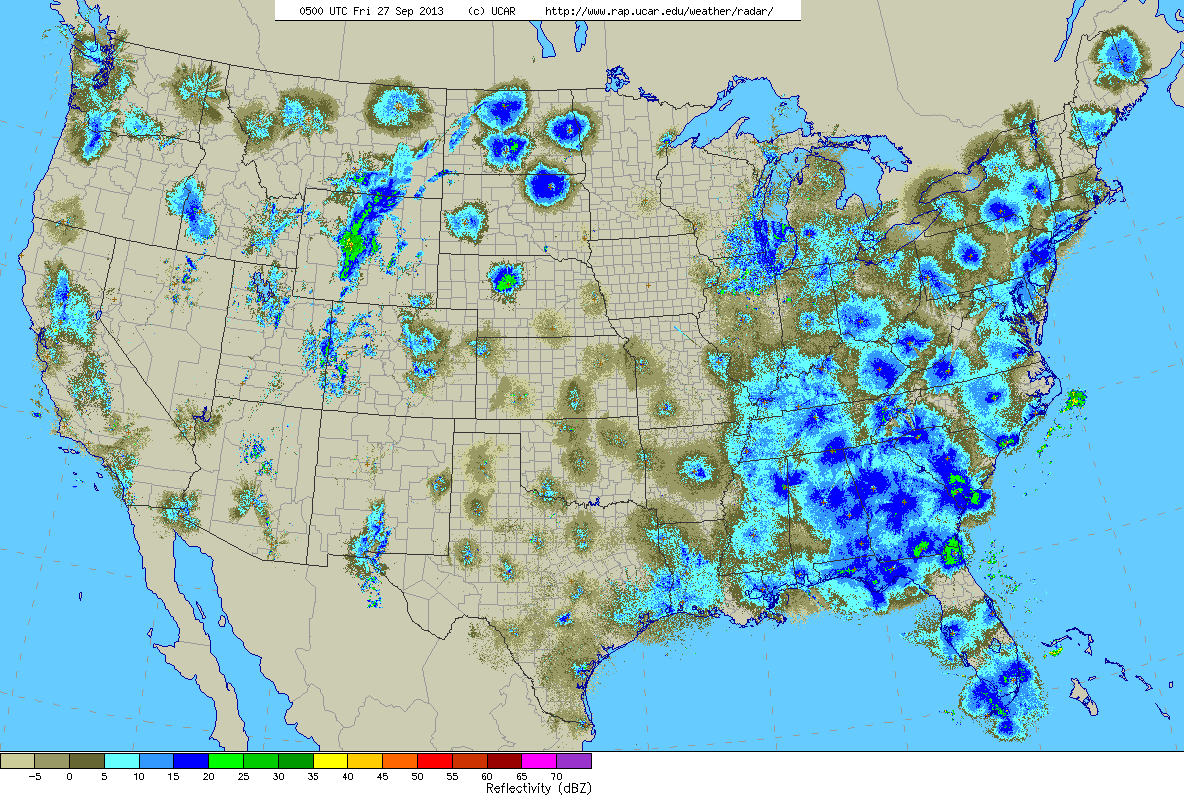Continental Summary:
Widespread light and moderate movements occurred across the West during the period, including some coastal flights allied with Santa Ana winds in southern California, while two strong pulses of moderate movements occurred during the middle of the period in the East. Birds on the move this week included Yellow-bellied Sapsucker, Hermit Thrush, Golden-crowned and Ruby-crowned Kinglets, Yellow-rumped Warbler, Swamp, White-throated, and White-crowned Sparrows, and Dark-eyed Junco.
 West
West
Light to moderate movements were apparent from northern California through portions of the inter-mountain West East and South into the Desert Southwest from the beginning of the period into the early portion of the week. These movements became more widespread by Monday night, as more favorable conditions evolved farther to the North, including diminishing extent and intensity of precipitation. With precipitation moving East through the middle of the week in the northern Rockies, movements there were muted, but light to moderate movements continued around this area of disturbance. These movements included migration over northeastern Montana, portions of the Great Basin and Pacific Northwest, and continuing flights from California through the Desert Southwest. As precipitation finally departed from the northern Rockies by the end of the period, more extensive moderate movements ensued in the Pacific Northwest. Coastal movements in portions of California during the period were probably enhanced by the presence of the Santa Ana winds and their coast-ward flow. Birds on the move this week included Cackling Goose, Swainson’s Hawk, Barn Swallow, American Robin, Ruby-crowned Kinglet, Black-throated Gray and Yellow-rumped Warblers, and Golden-crowned Sparrow.
Great Plains
A strong frontal boundary moving through the region spawned locally moderate movements where precipitation was not falling to begin the period. After its passage widespread light and moderate movements occurred; but as high pressure built behind the frontal passage, movements became sparse and much lighter. Light to moderate movements resumed for the remainder of the week in the northern Plains, but these movements were largely limited to that portion of the region. These movements were limited primarily by unfavorable conditions associated with the air mass influencing the southern Plains, including some local but intense storms. Birds on the move this week included Common Loon, Horned Grebe, Great Egret, Barn and Tree Swallows, American Robin, American Pipit, Gray Catbird, Spotted Towhee, and Clay-colored, Fox, and White-crowned Sparrows.
Upper Midwest and Northeast
Widespread light to moderate movements occurred from the Ohio and central Mississippi River valleys East to the Atlantic to begin the period. As a frontal boundary pushed East across the Mississippi River on Saturday night, moderate to heavy movements were apparent behind the front. Ahead of the front, however, only coastal areas continued to experience light to moderate movements. As the frontal boundary pushed farther East, so to did moderate to heavy movements. This scale of movements finally appeared at the coast and East of the Appalachians by Monday night. Moderate to heavy movements returned to the Great Lakes region on Tuesday night, with continuing moderate movements at the Atlantic coast. Moderate to heavy flights became more widespread on Wednesday night across many areas of the region, before finally diminishing to only sparse locally light and moderate movements on Thursday night. Birds on the move this week included Ruby-throated Hummingbird, Yellow-bellied Sapsucker, Red-eyed Vireo, Hermit Thrush, Golden-crowned and Ruby-crowned Kinglets, Brown Creeper, American Redstart, Orange-crowned, Palm, and Yellow-rumped Warblers, Savannah, Swamp, White-throated, and White-crowned Sparrows, and Dark-eyed Junco.
Gulf Coast and Southeast
Light to moderate movements occurred from the Mississippi River East to the Atlantic Coast and South into the Florida Peninsula to begin the period, with some locally heavy flights in the Southeast Coastal Plain. This pattern continued through the weekend in much of the Southeast, and began anew in Texas where moderate movements occurred in all but the eastern reaches of the state. A muting of this pattern was apparent by Monday night, followed by a return of more widespread light to moderate movements in the Southeast primarily East and South of the Appalachians. The period ended with sparse light and locally moderate flights, primarily in the Southeast Coastal Plain and portions of Florida. Birds on the move this week included Great Egret, Green Heron, Yellow-bellied Sapsucker, Yellow-throated and Red-eyed Vireos, American Redstart, Yellow, Prothonotary, Hooded, Chestnut-sided, and Canada Warblers, and Northern Parula.




